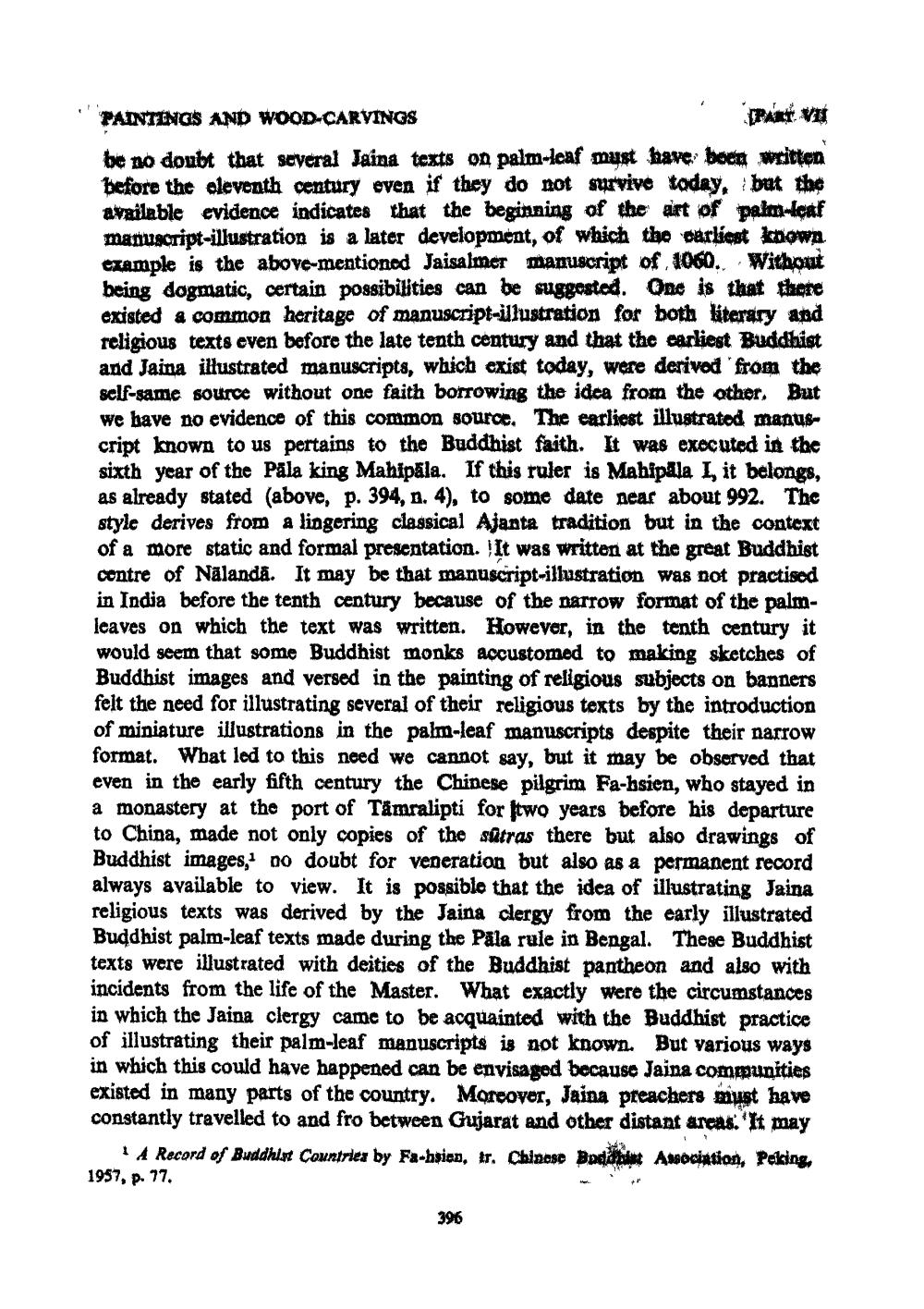________________
PAINTINGS AND WOOD-CARVINGS be no doubt that several Jaina texts on palm-leaf must have been written Before the eleventh century even if they do not survive today, but the available evidence indicates that the beginning of the art of palm-Icaf manuscript-illustration is a later development, of which the earliest known example is the above-mentioned Jaisalmer manuscript of 1060. Without being dogmatic, certain possibilities can be suggested. One is that there existed a common heritage of manuscript-illustration for both literary and religious texts even before the late tenth century and that the earliest Buddhist and Jaina illustrated manuscripts, which exist today, were derivod 'from the self-same source without one faith borrowing the idea from the other. But we have no evidence of this common source. The earliest illustratod manus cript known to us pertains to the Buddhist faith. It was executed in the sixth year of the Pala king Mahipala. If this ruler is Mahipala I, it belongs, as already stated (above, p. 394, n. 4), to some date near about 992. The style derives from a lingering classical Ajanta tradition but in the context of a more static and formal presentation. It was written at the great Buddhist centre of Nalanda. It may be that manuscript-illustration was not practised in India before the tenth century because of the narrow format of the palmleaves on which the text was written. However, in the tenth century it would seem that some Buddhist monks accustomed to making sketches of Buddhist images and versed in the painting of religious subjects on banners felt the need for illustrating several of their religious texts by the introduction of miniature illustrations in the palm-leaf manuscripts despite their narrow format. What led to this need we cannot say, but it may be observed that even in the early fifth century the Chinese pilgrim Fa-bsien, who stayed in a monastery at the port of Tämralipti for two years before his departure to China, made not only copies of the sütras there but also drawings of Buddhist images, no doubt for veneration but also as a permanent record always available to view. It is possible that the idea of illustrating Jaina religious texts was derived by the Jaina clergy from the early illustrated Buddhist palm-leaf texts made during the Pala rule in Bengal. These texts were illustrated with deities of the Buddhist pantheon and also with incidents from the life of the Master. What exactly were the circumstances in which the Jaina clergy came to be acquainted with the Buddhist practice of illustrating their palm-leaf manuscripts is not known. But various ways in which this could have happened can be envisaged because Jaina communities existed in many parts of the country. Moreover, Jaina preachers must have constantly travelled to and fro between Gujarat and other distant areas: 'It may
A Record of Buddhist Countries by Fa-hsion, tr. Chinoso Bolivalente Ansociation, Peking, 1997, p. 77.
396




